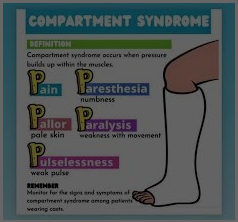A nurse is reinforcing teaching about pediculus capitis with the parents of a school-age child at a well-child visit. Which of the following Information should the nurse include?
"Lice can jump from one child to another."
"Washing your child's hair daily will prevent lice."
"Lice do not survive away from the host."
"Encourage your child to avoid sharing hats with other children."
The Correct Answer is D
A. "Lice can jump from one child to another." Lice do not jump or fly; they crawl from one person to another through direct contact or by sharing personal items like hats, combs, or bedding. This statement is incorrect.
B. "Washing your child's hair daily will prevent lice." Regular hair washing does not prevent lice infestations. Lice infest clean and dirty hair alike, and prevention involves avoiding direct head-to-head contact and sharing personal items.
C. "Lice do not survive away from the host." While lice need a human host to survive, they can live for up to 1-2 days away from the host on objects like bedding, hats, or brushes. This statement is not completely accurate.
D. "Encourage your child to avoid sharing hats with other children." This is correct advice to prevent the spread of lice. Sharing hats or other personal items can facilitate the transmission of lice from one child to another.
Nursing Test Bank
Naxlex Comprehensive Predictor Exams
Related Questions
Correct Answer is B
Explanation
A. Capillary refill less than 2 seconds: A capillary refill time of less than 2 seconds indicates good peripheral circulation, which is normal and not a cause for concern in this context. It is not the priority.
B. Tingling in the right foot Rationale: Tingling (paraesthesia) can be a sign of nerve damage or compromised circulation, which may indicate complications such as compartment syndrome. This is a priority finding because it can lead to severe consequences if not addressed promptly.
C. 2+ right pedal pulse Rationale: A 2+ pedal pulse indicates a normal pulse strength, which suggests that there is adequate blood flow to the extremity. It is not a priority compared to the potential for neurological or circulatory compromise.
D. Respiratory rate 24/min Rationale: A respiratory rate of 24/min is within the normal range for a school-age child (18-30 breaths per minute). While it is important to monitor vital signs, it is not a priority concern related to the fracture.

Correct Answer is D
Explanation
A. A school-age child who cries when the nurse is giving him an injection: Crying during an injection is a normal reaction for a child and does not indicate abuse.
B. A toddler who has multiple bruises on the shins of both legs and his parents report that he is clumsy: Bruises on the shins are common in toddlers due to normal play and falls. Without other concerning signs, this does not strongly indicate abuse.
C. A preschooler who has a BMI indicating obesity: While childhood obesity can be a sign of neglect in some cases, it is not a specific or immediate indicator of abuse without other signs.
D. An adolescent who asks to stay in the hospital because he likes the room: This is concerning because it might indicate that the adolescent is not feeling safe or comfortable at home, which could be a sign of abuse or neglect.
Whether you are a student looking to ace your exams or a practicing nurse seeking to enhance your expertise , our nursing education contents will empower you with the confidence and competence to make a difference in the lives of patients and become a respected leader in the healthcare field.
Visit Naxlex, invest in your future and unlock endless possibilities with our unparalleled nursing education contents today
Report Wrong Answer on the Current Question
Do you disagree with the answer? If yes, what is your expected answer? Explain.
Kindly be descriptive with the issue you are facing.
